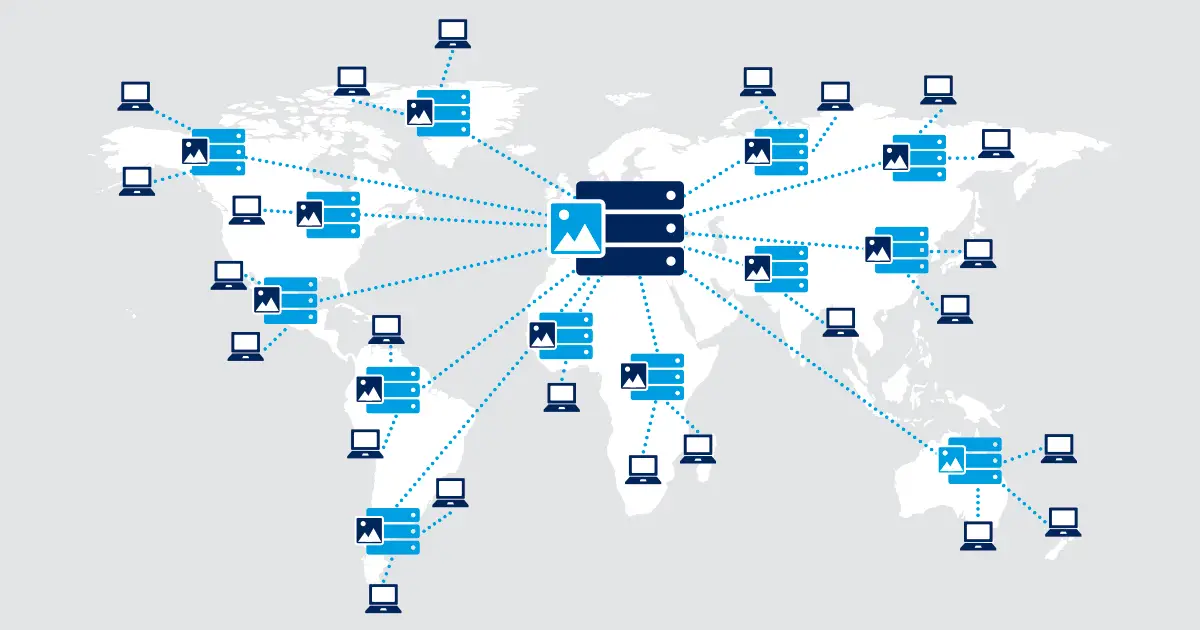Steps to Choose a CDN Provider:

1. Determine Your Business Requirements:

- Assess your website traffic, content types, and geographical distribution of users.
- Identify specific requirements like security, video delivery, and latency optimization.
2. Research CDN Providers:

- Explore industry reports, reviews, and testimonials to identify reputable providers.
- Request demos and trials to evaluate their services firsthand.
3. Evaluate Key Features:
Content Delivery:
- Global network of servers and points of presence (PoPs)
- Low latency for fast content delivery
- Support for various content types (e.g., images, videos, downloads)
Performance:
- High bandwidth capacity and scalability
- Load balancing and traffic management capabilities
- Performance monitoring and analytics tools
Security:
- Secure protocols (e.g., SSL, TLS)
- Compliance with industry standards (e.g., PCI DSS, HIPAA)
- DDoS protection and intrusion detection
Pricing and Contract:
- Pricing models (e.g., bandwidth-based, usage-based)
- Contract duration and termination terms
- Discounts for long-term commitments
4. Consider Additional Factors:
Customer Support:
- 24/7 technical support with multiple contact options
- Fast response times and knowledgeable staff
Integrations:
- Compatibility with your website platform and other applications
- Ease of integration and implementation
Reputation and Experience:
- Look for established providers with a proven track record
- Check for customer references and industry awards
5. Request a Trial or Proof of Concept (POC):
- Test the CDN provider’s services on a small scale to verify performance and compatibility.
- Use the results to make an informed decision.
6. Choose and Implement:
- Select the provider that best aligns with your business needs.
- Implement their CDN solution according to their instructions and guidelines.
7. Monitor and Optimize:
- Track key metrics (e.g., latency, bandwidth usage) to ensure optimal performance.
- Make adjustments as needed to improve the user experience and optimize costs.# How To Choose A CDN Provider For Your Business Needs
Executive Summary
Selecting the right CDN provider is crucial for businesses looking to optimize their online presence and deliver a seamless user experience. This comprehensive guide explores key factors and considerations in choosing a CDN provider that aligns with specific business needs.
Introduction
Content Delivery Networks (CDNs) have become essential for businesses to enhance the speed, reliability, and security of their online content delivery. With numerous CDN providers available, choosing the right one can be challenging. This guide provides a framework for evaluating CDN providers and making an informed decision.
FAQs
1. What is a CDN?
A CDN is a network of geographically distributed servers that cache and deliver content closer to users, reducing latency and improving page load times.
2. Why do I need a CDN?
CDNs offer several benefits, including:
- Improved website performance
- Enhanced user experience
- Reduced bandwidth costs
- Increased security
3. How much does a CDN cost?
CDN pricing models vary, but typically fall into three categories:
- Pay-as-you-go: Billed based on traffic volume
- Flat monthly fee: Fixed cost regardless of usage
- Hybrid model: Combination of both
Top 5 Subtopics
1. Features and Services
- Caching policies: Define how content is stored and retrieved
- Global network: Reach and distribution of servers worldwide
- Load balancing: Distributing traffic to minimize server overload
- Security measures: Protection against cyber threats
- Reporting and analytics: Insights into CDN performance
2. Performance and Reliability
- Latency: Time it takes for content to reach users
- Uptime: Percentage of time the CDN is operational
- Redundancy: Multiple servers ensure availability in case of outages
- Monitoring and alerting: Real-time monitoring and alerts for performance issues
- SLAs: Guarantees on performance and uptime
3. Content Management
- Content caching: Storage and delivery of static and dynamic content
- Content compression: Reducing file sizes for faster delivery
- Edge caching: Storing content on edge servers near users
- Geo-restrictions: Controlling access to content based on geographic location
- Content updates: Syncing changes to cached content in real time
4. Scalability and Flexibility
- Auto-scaling: Adjusting capacity based on traffic demand
- Multi-CDN: Using multiple CDNs for redundancy and cost optimization
- Customization: Ability to tailor CDN settings to specific needs
- API integration: Automation of CDN management through APIs
- Support for emerging technologies: Compatibility with new protocols and content formats
5. Cost and Pricing
- Pricing model: Pay-as-you-go, flat monthly fee, or hybrid
- Traffic volume: Cost based on amount of data transferred
- Features and services: Additional costs for premium features
- Negotiation: Potential for discounts and customized pricing
- Long-term contracts: Savings for multi-year commitments
Conclusion
Choosing the right CDN provider involves carefully evaluating the specific needs of your business. By considering the factors discussed in this guide, you can select a CDN provider that aligns with your performance, security, scalability, and budget requirements. A well-chosen CDN provider can significantly enhance your online presence and drive business success.
Keyword Tags
- CDN provider
- Content Delivery Network
- Web performance
- Website speed
- Content caching
